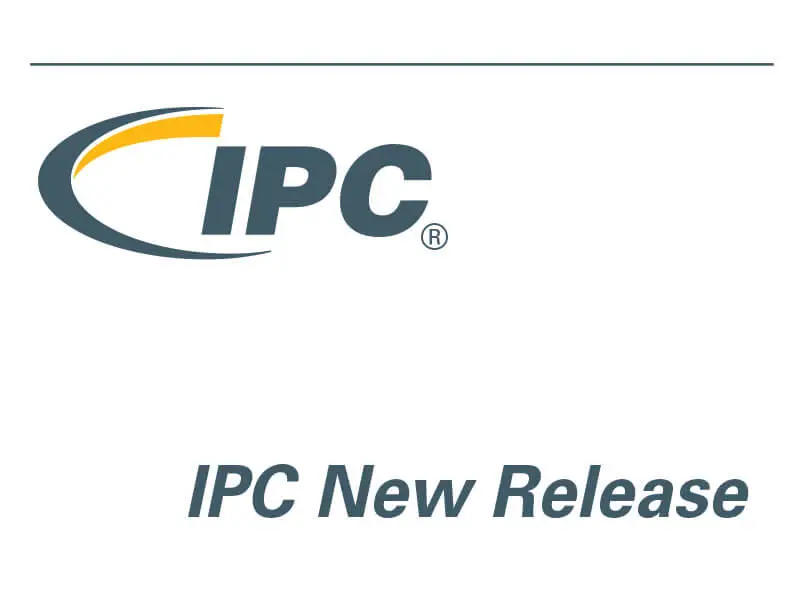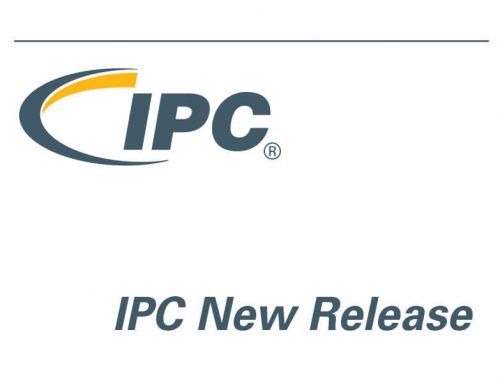IPC J-STD-001H is recognized globally for its criteria on soldering processes and materials. Updated with participants from 27 countries providing input and expertise, the IPC J-STD-001H standard brings the latest criteria to the industry including guidance on the use of x-ray to inspect through-hole solder conditions that are not visible by any other means.
IPC J-STD-001H is a must-have for those in the electronics industry with an interest in the process and acceptance criteria for electrical and electronic assemblies. J-STD-001 is developed in synergy with IPC-A-610 and is supported by IPC-HDBK-001 for those wanting additional information and explanation on the requirements. If you purchased IPC J-STD-001H you should also purchase and use IPC-A-610H, they work together.
Developed by the J-STD-001 Task Group (5-22A), J-STD-001 Task Group – Europe (5-22A-EU), J-STD-001 Task Group – China (5-22ACN) of the Assembly and Joining Committees (5-20) of IPC
Number of Pages: 108 | Release Date: 10/7/2020 | ISBN: 978-1-951577-70-4
Changes to J-STD-001H include:
- IPC-J-STD-001G-AM1 is now incorporated to IPC-J-STD-001H
- Section 8 is all new – Cleaning and Residue Requirements
- 1.56 μg/NaCI equivalence/cm2 value for resistivity of solvent extract (ROSE) – no longer acceptable basis for qualifying a manufacturing process
- IPC-WP-019B provides explanation and rationale for Section 8
- Added Appendix D – Using X-ray for Acceptance for Solder Connection
- New criteria for wrapped terminals
Available at IPC: https://shop.ipc.org/IPC-J-STD-001H-English-D
1.1 Scope This IPC J-STD-001H standard describes materials, methods and acceptance criteria for producing soldered electrical and electronic assemblies. The intent of this document is to rely on process control methodology to ensure consistent quality levels during the manufacture of products. It is not the intent of this standard to exclude any procedure, such as for component placement or for applying flux and solder used to make the electrical connection.
1.2 Purpose This standard prescribes material requirements, process requirements, and acceptability requirements for the manufacture of soldered electrical and electronic assemblies. For a more complete understanding of this document’s recommendations and requirements, one may use this document in conjunction with IPC-HDBK-001, IPC-AJ-820 and IPC-A-610. Standards may be updated at any time, including with the addition of amendments. The use of an amendment or a newer revision is not automatically required.
1.3 Classification This standard recognizes that electrical and electronic assemblies are subject to classifications by intended end-item use. Three general end-product classes have been established to reflect differences in manufacturability, complexity, functional performance requirements, and verification (inspection/test) frequency. Use of this standard requires agreement on the class to which the product belongs. The User has the responsibility for identifying the class to which the assembly is produced. The product class should be stated in the procurement documentation package. If the User does not establish and document the acceptance class, the Manufacturer may do so.
CLASS 1 General Electronic Products
Includes products suitable for applications where the major requirement is function of the completed assembly.CLASS 2 Dedicated Service Electronic Products
Includes products where continued performance and extended life is required, and for which uninterrupted service is desired but not critical. Typically the end-use environment would not cause failures.CLASS 3 High Performance/Harsh Environment Electronic Products
Includes products where continued high performance or performance-on-demand is critical, equipment downtime cannot be tolerated, end-use environment may be uncommonly harsh, and the equipment must function when required, such as life support or other critical systems.1.4 Measurement Units and Applications This standard uses International System of Units (SI) units per ASTM SI10, IEEE/ASTM SI 10, Section 3 [Imperial English equivalent units are in brackets for convenience]. The SI units used in this standard are millimeters (mm) [in] for dimensions and dimensional tolerances, Celsius (°C) [°F] for temperature and temperature tolerances, grams (g) [oz] for weight, and lux for illuminance.
Note: This standard uses other SI prefixes (ASTM SI10, Section 3.2) to eliminate leading zeroes (for example, 0.0012 mm becomes 1.2 µm) or as alternative to powers-of-ten (3.6 x 103 mm becomes 3.6 m).
Preview the IPC-J-STD-001H table of contents .pdf file.
For training in the IPC J-STD-001H, check out our IPC J-STD-001 training page.


